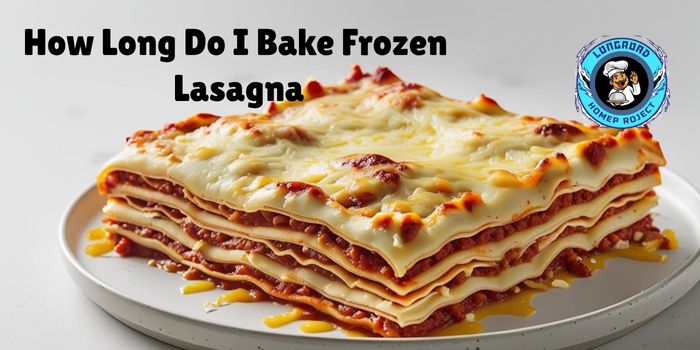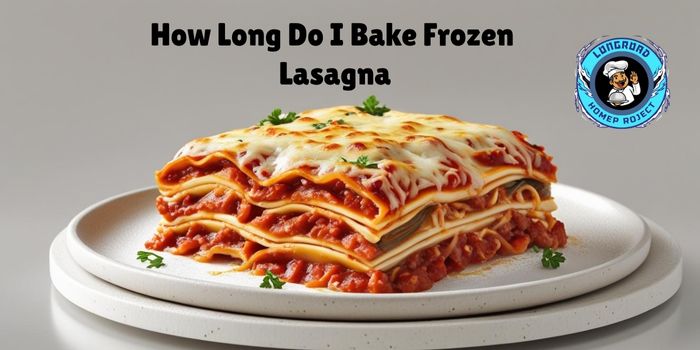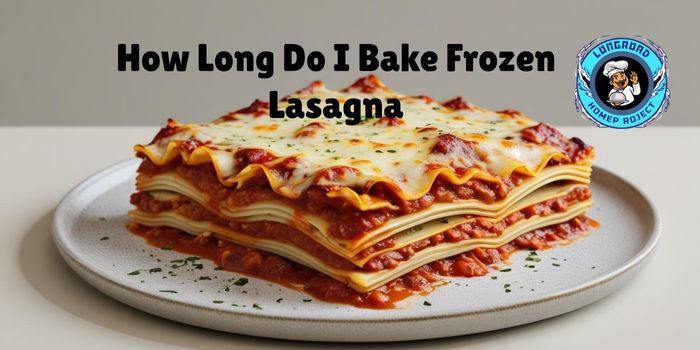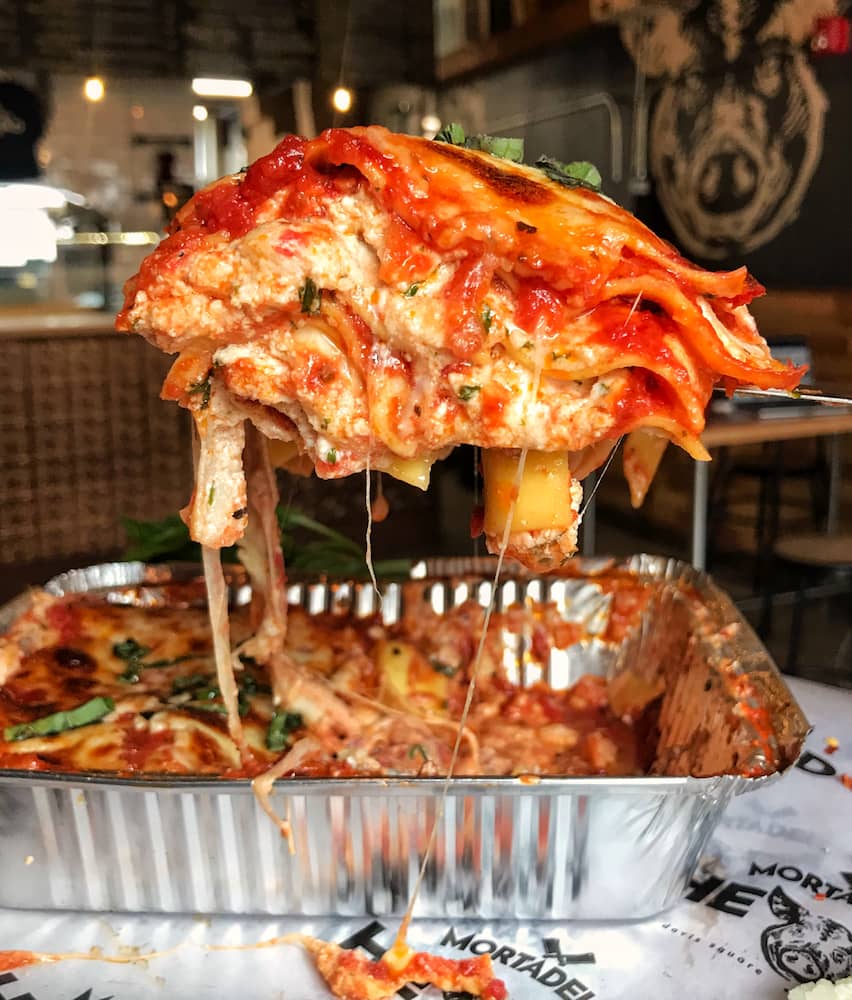As an Amazon Associate I earn from qualifying purchases.
Are you staring at that frozen lasagna in your freezer, wondering how long it needs to bake before you can enjoy its delicious layers of pasta, cheese, and sauce? You’re not alone!
Many of us have been there, eager to transform that frozen block into a mouthwatering meal. The good news is that you can master this with just a little guidance. Imagine the enticing aroma filling your kitchen as you wait for that perfect moment to savor every bite.
Curious to know the secret to getting it just right? Keep reading, and you’ll discover the simple steps to ensure your frozen lasagna is baked to perfection every time.
Choosing The Right Temperature
Baking frozen lasagna can be tricky. The right temperature ensures even cooking. It also preserves the flavors. Knowing the correct temperature can make all the difference. Let’s explore how to choose the right temperature for baking your lasagna to perfection.
Choosing The Right Temperature For Baking Lasagna
Set your oven to the ideal temperature for lasagna. Typically, 375°F works well. This temperature allows even heating. It cooks the layers thoroughly. If the temperature is too high, it could burn the top. Too low, and the center might remain cold.
Why 375°f Is The Magic Number
375°F provides a balanced heat. It crisps the top without drying it. The cheese melts perfectly. The sauce bubbles. This temperature is ideal for frozen lasagna.
Ensuring Even Cooking
Preheat your oven before baking. This step is vital. It ensures the lasagna starts cooking immediately. An even heat distribution prevents cold spots. This results in a delicious meal every time.
Adjusting Temperature For Different Ovens
Ovens vary in heat distribution. Some may run hotter or cooler. If unsure, use an oven thermometer. This tool helps check the actual temperature. Adjust accordingly for best results.
Checking For Doneness
Insert a knife into the center. It should come out hot. The cheese on top should be bubbly and golden. This indicates the lasagna is ready to enjoy.
Preparing Your Oven
Getting ready to bake frozen lasagna starts with your oven setup. Proper preparation ensures even cooking and delicious results. Follow these simple steps for the perfect lasagna experience.
Preheat Your Oven
Set your oven to 375°F (190°C). Preheating creates the ideal cooking environment. It ensures your lasagna cooks evenly and thoroughly. Wait for your oven to reach the set temperature before proceeding.
Adjust Oven Racks
Position your oven rack in the center. This placement helps distribute heat evenly. Center rack cooking prevents burnt edges and uneven cooking.
Prepare Baking Tray
Place your lasagna on a sturdy baking tray. A solid tray supports the weight of the lasagna. It also catches any spills or drips during baking.
Check Oven Cleanliness
Ensure your oven is clean and free of debris. Clean ovens improve heat circulation. They also prevent unwanted smells or smoke during baking.
Directly Baking From Frozen
Baking frozen lasagna directly from the freezer is convenient. It saves time and effort. You can enjoy a delicious meal without much prep work. The process is straightforward. Just follow a few simple steps to ensure it cooks evenly.
Understanding Cooking Times
Frozen lasagna requires more time than fresh. Preheat your oven to 375°F (190°C). Bake the lasagna for about 90 minutes. Check its internal temperature. It should reach 165°F (74°C) for safety.
Optimal Rack Placement
Place the lasagna on the middle oven rack. This ensures even heat distribution. Avoid the top or bottom racks. They might cause uneven cooking.
Using Foil For Best Results
Cover the lasagna with aluminum foil. This prevents the top from burning. Remove the foil in the last 10 minutes. It allows the cheese to brown nicely.
Checking For Doneness
Look for bubbling edges. The cheese should be golden brown. Use a food thermometer for accuracy. Ensure it reads 165°F (74°C).
Allowing Time To Set
Let the lasagna sit for 10 minutes before serving. This helps it set. It also makes slicing easier. Enjoy your perfectly baked lasagna.

Thawing Before Baking
Thawing frozen lasagna before baking can affect cooking time. Typically, bake at 375°F for about 60 minutes. Ensure the internal temperature reaches 165°F for safety and perfect taste.
Thawing frozen lasagna before baking can significantly impact its taste and texture. It allows the lasagna to cook evenly, preventing a cold center and overcooked edges. But how exactly do you go about thawing it correctly?
Why Thawing Matters
Thawing your lasagna ensures that it cooks uniformly. When baked directly from frozen, the outer layers may overcook while the center remains icy. This can lead to a less-than-ideal dining experience, where the edges are dry and the middle is undercooked.
Simple Thawing Techniques
The refrigerator is your best friend for thawing. Place your frozen lasagna in the fridge the night before you plan to bake it. This gradual thawing process keeps the texture intact and reduces the risk of bacteria growth. If you’re short on time, consider the cold water method. Submerge the sealed lasagna in cold water for a couple of hours, changing the water every 30 minutes. This method speeds up the thawing process while still being safe.
Personal Experience With Thawing
I once skipped thawing a lasagna due to time constraints. The result was a culinary disaster with a burnt top and a chilly center. Since then, I’ve always made sure to plan ahead, and the difference is night and day in both taste and texture.
Thawing Tips For Better Flavor
Ensure your lasagna is sealed properly to prevent any water leakage during thawing. This keeps it from becoming soggy. Also, consider adding an extra layer of cheese or sauce before baking, which can enhance the flavor and moisture.
Common Thawing Mistakes
Avoid thawing on the counter. This can lead to uneven thawing and potential bacterial growth. Additionally, don’t rush the process by using hot water, as this can affect the pasta’s texture. Does thawing seem like an extra step? Remember, the little effort of planning ahead can elevate your meal from ordinary to extraordinary. What would you prefer, a perfectly cooked lasagna or a half-frozen one?
Using Foil And Coverings
Cover frozen lasagna with foil for even cooking. Bake at 375°F for about 90 minutes. Remove foil for last 10 minutes for a golden top.
Baking frozen lasagna can be a bit tricky, especially if you want it to turn out perfectly every time. One of the key factors in achieving this is using foil and other coverings correctly. These coverings play a vital role in ensuring your lasagna is cooked evenly, stays moist, and doesn’t burn. Let’s dive into the best practices for using foil and coverings while baking frozen lasagna.
Why Use Foil?
Foil acts as a protective barrier. It prevents the top layer of your lasagna from burning before the inside is fully cooked. This is especially important when baking lasagna straight from the freezer, as it needs a bit more time to cook through. Covering your lasagna with foil traps heat and moisture, allowing the dish to cook evenly. This results in a deliciously gooey cheese layer and perfectly tender pasta.
How To Properly Cover With Foil
First, make sure the foil covers the dish tightly. This keeps the heat in and ensures even cooking. If you’re using a glass dish, you can place the foil directly over it. For metal dishes, you might want to lightly grease the foil to prevent sticking. Fold the edges of the foil over the sides of the dish. This prevents steam from escaping and keeps the top of your lasagna from drying out.
When To Remove The Foil
Removing the foil at the right time is crucial. Usually, you should take it off about 15-20 minutes before the baking time is up. This allows the top to brown and the cheese to bubble. If you leave the foil on for too long, the top won’t get that beautiful golden color. On the other hand, removing it too early might result in a burnt top layer.
Using Other Coverings
While foil is the most common choice, alternatives like parchment paper can also be used. Parchment paper is great if you want to avoid the metallic taste that sometimes comes with foil. Reusable silicone lids are another eco-friendly option. These lids fit snugly over your dish, keeping moisture in without the waste of single-use foil.
Personal Experience
I once baked a frozen lasagna without covering it properly, and the result was a dry, overcooked top layer. I learned that investing a few extra minutes in securing the foil makes all the difference. Have you ever tried adding a sprinkle of water or sauce before covering it with foil? It can enhance the moisture, ensuring each bite is as delightful as the last.
Common Mistakes To Avoid
Avoid pressing the foil down too hard. This can cause it to stick to the cheese, ruining the top layer. Another mistake is reusing old, crumpled foil. Always use a fresh piece for the best results.
Final Thoughts
Covering your frozen lasagna with foil might seem like a small step, but it’s one that can make a big difference. It’s all about finding that perfect balance between keeping the moisture in and letting the top get crispy and golden. Next time you’re baking frozen lasagna, take a moment to ensure your foil is perfectly placed. You’ll taste the difference, and so will anyone lucky enough to share your table.

Checking Doneness
Bake frozen lasagna at 375°F for 60-75 minutes. Cover with foil to keep it moist. Check doneness by inserting a knife; it should be hot in the center.
When you’re baking frozen lasagna, the moment of truth arrives when you need to check if it’s done. This step can make or break your meal. You want that perfect balance of gooey cheese, tender pasta, and flavorful sauce. But how can you be sure it’s ready without cutting into it prematurely? Let’s dive into some practical tips.
Look For Bubbling Sauce
One of the simplest ways to check if your lasagna is done is by observing the sauce. When the lasagna is fully cooked, the sauce should be bubbling around the edges. This indicates that the internal temperature is high enough to ensure all layers are cooked.
Use A Food Thermometer
A food thermometer is your best friend here. Insert it into the center of the lasagna. You should aim for an internal temperature of at least 165°F (73°C). This guarantees that any potentially harmful bacteria are killed and the food is safe to eat.
Check The Cheese
Pay attention to the cheese on top. It should be melted and slightly golden brown. If the cheese is still pale or not fully melted, your lasagna likely needs more time in the oven.
Conduct The Knife Test
Insert a knife into the center of the lasagna. When you pull it out, it should feel hot to the touch. This tactile test can provide a quick confirmation if you don’t have a thermometer at hand.
Consider The Cooking Time
Typically, a frozen lasagna will need about 90 minutes in a 375°F (190°C) oven. However, ovens vary, and so does the thickness of lasagna. Always start checking doneness about 10 minutes before the suggested time to avoid overcooking.
Assess The Pasta Texture
If you’re unsure, you can carefully pull back a small section of cheese and sauce to check the pasta. It should be tender but not mushy. Remember to reseal the foil if you need to cook it longer. Have you ever found your lasagna looking perfect on top but cold in the middle? These methods can help you avoid that scenario. Checking doneness isn’t just about time; it’s about these subtle signs that tell you your lasagna is ready to enjoy.
Adjusting For Different Sizes
Adjusting the baking time for frozen lasagna is crucial. The size of the lasagna affects how long it should bake. Smaller portions cook faster, while larger ones take more time. Understanding these differences ensures your lasagna is perfectly cooked, every time.
Small Portions: Individual Servings
Individual serving lasagnas bake relatively quickly. These smaller portions usually need about 30 to 40 minutes. Ensure the center is hot before serving. Cover with foil to prevent over-browning.
Medium-sized Lasagna: Family Meals
Family-sized lasagnas typically require more time. Bake these medium-sized dishes for about 60 to 75 minutes. Check the internal temperature. It should reach at least 165°F (74°C) for safety. Uncover in the last 10 minutes for a crispy top.
Large Lasagna: Party-size
Large lasagnas are great for gatherings. They need the most baking time, around 90 to 120 minutes. Cover with foil for the first half to ensure even cooking. Remove the foil for a golden, bubbly finish.
Extra Tips For Perfect Baking
Use a thermometer to check temperature. Let lasagna rest for 10 minutes after baking. This helps the layers set and makes serving easier. Always follow package instructions for the best results.

Troubleshooting Common Issues
Baking frozen lasagna typically takes about 60 to 90 minutes at 375°F. Ensure it’s heated thoroughly before serving. Check the center to confirm it’s hot and bubbly.
When baking frozen lasagna, you might encounter some common issues that can affect the final result. Understanding these challenges and knowing how to troubleshoot them can help you achieve a perfectly cooked dish every time. Whether it’s uneven cooking or a watery texture, addressing these problems effectively will ensure your lasagna is delicious and satisfying.
Uneven Cooking
Uneven cooking can be a real disappointment, especially when some parts are overcooked while others remain cold. To prevent this, make sure your oven is preheated properly. Setting the right temperature ensures even heat distribution. Consider rotating the lasagna halfway through the baking time. This simple trick can help achieve consistent cooking throughout.
Watery Texture
A watery lasagna can ruin your meal experience. This often occurs when excess moisture isn’t properly evaporated. Use foil to cover the lasagna for the majority of the baking time, but remove it for the last 15-20 minutes. This allows excess water to escape and helps the cheese brown nicely. If you’ve ever faced this, you’ll know how frustrating it can be.
Burnt Edges
Burnt edges can be a sign that the lasagna was cooked at too high a temperature or for too long. Make sure to adhere to the recommended baking time and temperature settings. If you notice the edges browning too quickly, cover them with foil. This protects them while the rest of the lasagna continues to cook. Have you ever had to scrape off the edges to salvage your meal?
Insufficient Heating
If your lasagna isn’t heated thoroughly, it can lead to a less enjoyable dining experience. This usually happens when it’s removed from the oven too soon. Use a meat thermometer to check the internal temperature. Aim for at least 165°F to ensure it’s cooked through. It’s surprising how much difference a few extra minutes can make.
Cheese Not Melting Properly
Cheese that doesn’t melt properly can make the lasagna less appetizing. Use a mix of cheeses that melt well, such as mozzarella and cheddar. If your cheese is still unmelted near the end of the baking time, try broiling the lasagna for a couple of minutes. You’ll be amazed at how quickly this resolves the issue.
Overcooked Pasta
Overcooked pasta can become mushy and lose its texture. To avoid this, ensure that your lasagna is cooked at the right temperature and for the correct duration. You might have experienced this and thought it was beyond repair. Rest assured, adjusting the baking time can preserve that delightful al dente feel. Troubleshooting these issues can make a significant difference in your lasagna’s outcome. Have you faced any of these problems before, and how did you solve them?
Enhancing Flavor And Texture
Baking frozen lasagna takes about 90 minutes at 375°F. Cover with foil for moist texture. Remove foil for crispy top.
Enhancing the flavor and texture of frozen lasagna can transform it from a simple meal to a delightful culinary experience. While it’s easy to follow package instructions, adding a personal touch can make all the difference. Here’s how you can elevate your frozen lasagna to taste like a homemade masterpiece.
Choose Quality Ingredients
Starting with a high-quality frozen lasagna makes a huge difference. Look for brands that use real cheese and authentic pasta. It’s worth spending a little extra for better taste and texture.
Thaw For Better Consistency
Consider thawing your frozen lasagna before baking. This can help it cook more evenly and maintain a better texture. Simply leave it in the fridge overnight if you have the time.
Add Fresh Herbs And Spices
Sprinkle fresh herbs like basil or oregano on top before baking. This can bring out the flavors in the sauce and cheese. A pinch of red pepper flakes can add a subtle kick.
Incorporate Extra Cheese
Who doesn’t love a cheesy lasagna? Add a layer of mozzarella or parmesan on top. It creates a deliciously golden crust that’s hard to resist.
Use A Convection Oven
If you have a convection oven, use it. The circulating air helps cook the lasagna evenly. It also gives you that perfect crispy top layer.
Customize With Veggies Or Meat
Personalize your lasagna by adding sautéed vegetables or cooked meat. Mushrooms, spinach, or ground beef are great options. This not only enhances flavor but also adds nutritional value.
Let It Rest
Once baked, let your lasagna rest for 10-15 minutes. This allows the layers to set, making it easier to slice. Patience pays off with perfectly layered pieces. How do you enhance your frozen lasagna? Share your tips and tricks in the comments below!

Credit: mortadellahead.com
Frequently Asked Questions
How Long To Bake Frozen Lasagna At 350°f?
Bake frozen lasagna at 350°F for about 90 minutes. Cover it with foil to prevent drying. Remove foil in the last 10 minutes for a crispy top. Always check the internal temperature; it should reach 165°F for safe consumption.
Can I Bake Frozen Lasagna Without Thawing?
Yes, you can bake it without thawing. Just adjust the baking time. It typically takes about 90 minutes at 350°F. This ensures the lasagna is heated through evenly and thoroughly. Remember to check the internal temperature for safety.
What Temperature To Bake Frozen Lasagna?
Bake frozen lasagna at 350°F for optimal results. This temperature ensures even cooking and prevents burning. Make sure to cover it with foil to retain moisture. Always check the internal temperature reaches 165°F before serving.
Should I Cover Lasagna While Baking?
Yes, cover lasagna with foil while baking. This prevents the top from drying out. Remove the foil in the last 10 minutes for a golden, crispy top. Covering also ensures even cooking and retains moisture, enhancing flavor.
Conclusion
Baking frozen lasagna can be simple. Follow the package instructions closely. Most lasagnas bake between 60 to 90 minutes. Check the center for warmth before serving. Golden cheese on top means it’s ready. Use a fork to test if unsure.
Pair with a fresh salad for a balanced meal. Enjoy your homemade feast with loved ones. Baking frozen lasagna can be a delightful experience. Each bite brings comfort and joy. Explore different brands for variety. Keep experimenting in the kitchen.
Cooking is an art, enjoy the process.
As an Amazon Associate I earn from qualifying purchases.
